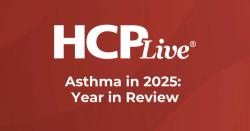
OR WAIT null SECS
Pediatric Asthma Care Decreased During COVID-19
Researchers in North Carolina recorded improvements in pediatric healthcare utilization partly attributed to a lack of exposure to allergens and other exacerbations.
Since 2019, the world has continued to grapple with the COVID-19 pandemic, and the complications that arose from that have had a profound impact on patients, doctors, and their experiences with the healthcare access and utilization.
One of the most vulnerable populations affected by the pandemic were children with asthma. More than 5.5 million children and adolescents have been diagnosed with asthma in the United States, all of whom require assessment and monitoring, pharmacologic therapy, and education in symptom management and treatment throughout their lives.
A team of investigators from the Duke University School of Medicine in North Carolina conducted an analysis of healthcare utilization and asthma outcomes in children before and during the pandemic and found a significant decrease in all encounter types, with a compensatory increase in tele-health visits.
At a time when positive outcomes seem few and far between, the data collected by Jillian H. Hurst, PhD, and fellow investigators seemed particularly inspiring.
The team conducted the study based on the hypothesis that the pandemic would alter care patterns and health outcomes in children and adolescents with asthma. With school closures, social distancing precautions, and stay-at-home orders, the exposure to common asthma triggers was expectedly altered.
Hurst and colleagues set out to find what the implications of those changes were for such a vulnerable and healthcare dependent group.
The Study
The investigators previously identified 5656 children 5-18 years old, all of whom met the criteria presented in the asthma-appropriate International Classification of Diseases, 10th Revision (ICD-10).
Additionally, all participants were required to live within the Durham County area.
Data was collected on age, race, and ethnicity, primary payor, number and types of healthcare encounters within the Dow University of Health Services (DUHS), asthma exacerbations that required medical attention, COVID-19 testing and results, and antibiotic prescriptions.
Changes in healthcare utilization and asthma outcomes among patients were studied in the year before the pandemic, known as “Year 1” (March 1,2019-February 28, 2021) and during the first year of the pandemic, known as “Year 2” (March 1, 2020-February 28, 2021).
A pair of Wllcoxon tests were used to assess differences in healthcare utilization in the year prior to the pandemic and the year of the pandemic.
Results
The investigators first recorded the overall utilization of healthcare services before COVID-19. According to the study, the patients in the cohort had a median of 6 healthcare encounters in the year leading up to COVID-19, and 66.6% had a well-visit.
During Year 2 of the study, the median dropped to 5 encounters and 48.1% well-child visits. The percentages of admissions, emergency department visits, and other out-patient encounters declined significantly, while tele-health visits increased significantly (from 0.03% to 35%).
Hurst and colleagues recorded a significant decrease in the number of asthma exacerbations.
In Year 1504 patients in the cohort (12.7%) has an asthma exacerbation. The number dropped to 127 patients (3.2%) in Year 2.
While there was likely a myriad of reasons, the team attributed some of the change to school closures and the stay-at-home policies enacted during the pandemic.
They noted that asthma exacerbations in children are typically associated with seasonal peaks found in the fall and winter seasons, and the lack of exposure could have benefitted their condition.
Slight increases in exacerbations later in the study appeared to coincide with reopening measures that took place in May and September.
The improvements recorded in the study were seen across the total population, regardless of factors such as race/ethnicity, although a greater increase in telehealth visits were noted among publicly insured children compared to private insurance.
Overall, the investigators recorded several improvements in the overall care and quality of life in children and adolescents with asthma during the pandemic, though they urged for more research to be done on the subject.
“Future work should seek to fully evaluate the specific factors that contributed to improved outcomes in children with asthma, particularly with respect to factors that could be leveraged after the end of the COVID‐19 pandemic, including the use of tele-health for the provision of care,” the investigators wrote.
The study, “Reduced pediatric urgent asthma utilization and exacerbations during the COVID-19 pandemic,” was published online in Wiley Online Library.


